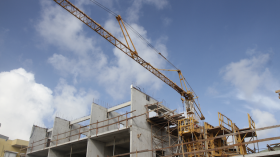Sue Robb of 4Children talks to Julie Laughton and Alison Britton from the Department for Education about the role of childminders in delivering the 30 hours free entitlement.
Third of schools unable to cover their costs

New research has revealed that nearly a third of local authority secondary schools in England are unable to cover their costs, with the number of schools with budgets in the red having almost quadrupled in four years.
The Education Policy Institute, who conducted the research, said that the average local authority secondary school debt is £483,000, highlighting a ‘marked deterioration’, despite the Department for Education maintaining that more than 90 per cent of state schools are in surplus.
The findings show that 30.3 per cent of local authority maintained secondary schools were in deficit last year, almost four times that of 2014. Additionally, one in every 10 local authority secondary school has a deficit of over 10 per cent of their total income, while the proportion of special schools in deficit has nearly doubled since 2014, with an average deficit of nearly £225,298.
The proportion of academies spending more than their income is less than for local authority maintained schools, while 38 per cent of primary academies were found to be spending more than their income last year, compared to 51 per cent of local authority primary schools in 2016-17. Similarly, for secondaries, the figures were half for academies (50 per cent) and just under two-thirds (64 per cent) for local authority schools. The Education Policy Institute also warns that the propensity to have an in-year deficit is lower in academies in multi-academy trusts than for local authority schools.
Looking at schools with excess surpluses, the think tank says that, in theory, nearly four-fifths of local authority school deficits could be eliminated if local authorities were able to redistribute reserves from excessive balances within the authority into deficit balances.
Company Focus
BLE Lighting & Power Ltd, a leader in cutting-edge lighting and power solutions, is proud to introduce BLE Connect, a groundbreaking Fully Automated Emergency Lighting System designed to simplify the labour intensive maintenance of emergency lighting across multiple facilities.
Event Diary
UKREiiF has quickly become a must-attend in the industry calendar for Government departments and local authorities.
The multi-award-winning UK Construction Week (UKCW), is the UK’s biggest trade event for the built environment that connects the whole supply chain to be the catalyst for growth and positive change in the industry.
Supplier Profiles
Geo Energy
At GeoEnergy Design, we're on a mission to disrupt the traditional way heating and cooling ha
Latest Features
Professor Harith Alani, director of the Knowledge Management Institute at the Open University explains how AI can be used for good and bad.
Alex Lawrence, head of health & social care, techUK sets out techUK’s Five Point Plan for CareTech.

















